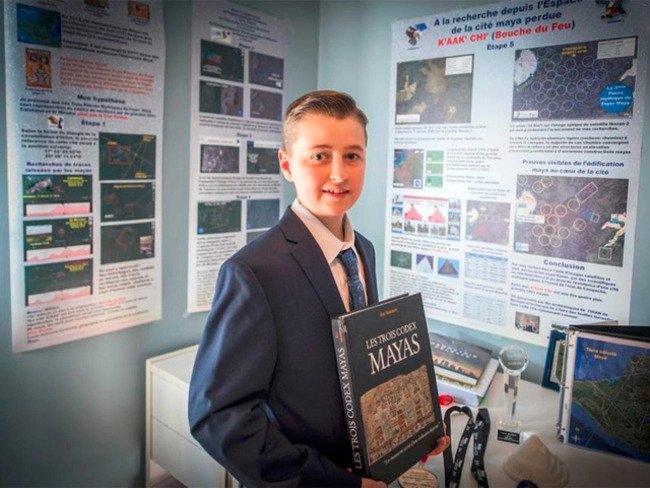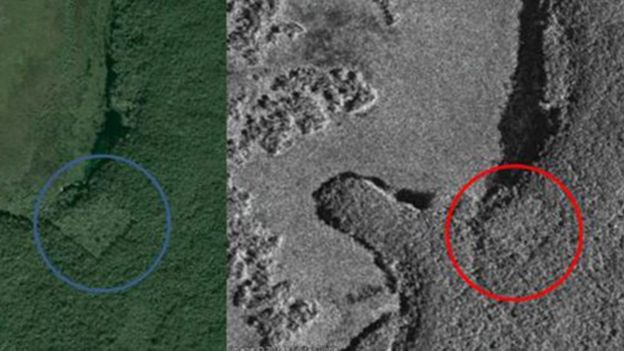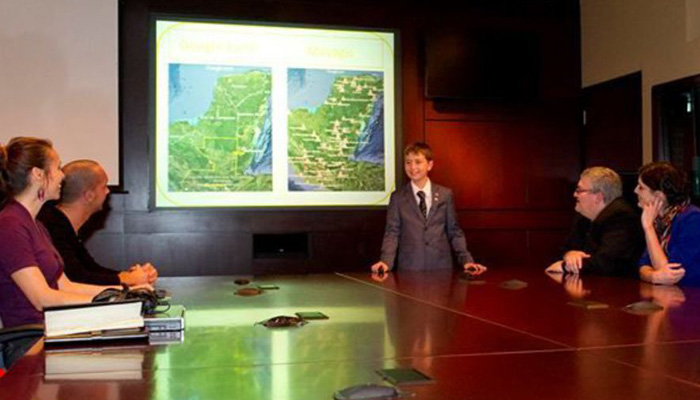15-year-old boy discovers lost ancient Mayan city
A 15-year-old school student from Quebec, Canada, William Gadoury discovered something that archaeologists have been covering for centuries-a nearly abandoned Mayan civilization settlement, hidden deep within the Yucatan jungle of Southeastern Mexico.

He didn’t do it by hiring a bunch of expensive equipment, hopping on a plane, and slaving away on an excavation site – he discovered the incredible ruins from the comfort of his own home, by figuring out that the ancient cities were built in alignment with the stars above.
“I did not understand why the Maya built their cities away from rivers, on marginal lands and in the mountains,” Gadoury told French-Canadian magazine, Journal de Montréal.
“They had to have another reason, and as they worshipped the stars, the idea came to me to verify my hypothesis. I was really surprised and excited when I realised that the most brilliant stars of the constellations matched the largest Maya cities.”
Gadoury had been studying 22 Maya constellations for years before releasing that he could line up the positions of 117 Maya cities on the ground with maps of stars and constellations above – something that no one had pieced together before.
With this in mind, he located a 23rd constellation, which included just three stars. According to his sky map, he could only link up two cities with the three stars, so suspected that a third city remained undetected in that spot.

Unfortunately, the location on the ground that matched up with the third star wasn’t exactly somewhere that Gadoury could just go visit – it’s right in the heart of the jungle, in the inaccessible and remote region of Mexico’s southern Yucatán Peninsula.
Not that stopped Gadoury – he knew that a fire had stripped much of the forest in the area back in 2005, which meant that from above, you might have an easier time spotting ancient ruins than if the canopy had been thriving for the past couple of thousand years.
All he needed to do was access satellite imagery of the area from the Canadian Space Agency, which he mapped onto Google Earth images to see if there were any signs of his lost city.
Further analyses from satellites belonging to NASA and the Japanese Space Agency revealed what looks like a pyramid and 30 buildings at the location mapped by the star, Yucatan Expat Life reports.

As Daniel De Lisle from the Canadian Space Agency told Samuel Osborne at The Independent, the satellite images revealed certain linear features on the forest floor that looked anything but natural. “There are enough items to suggest it could be a man-made structure,” he said.
Gadoury has tentatively named the lost city K’àak’ Chi’, meaning “fire mouth”, and will be working with researchers from the Canadian Space Agency to get his discovery published in a peer-reviewed journal.
Now, we don’t want to burst anyone’s bubble here, but while things look promising from those satellite images, nothing can be confirmed until experts can access the site and see the remains up close.
A team of archaeologists is now figuring out how to make that happen, and one of the researchers involved in the project, Armand LaRocque from the University of New Brunswick, told the Journal de Montréal that if they can get the funds to organise an excavation, they’ll be taking Gadoury along for sure.
“It would be the culmination of my three years of work and the dream of my life,” said Gadoury, and suddenly we feel incredibly inadequate that the best thing we did at 15 was hand in most of our assignments on time.
Update: In a strange development, a scientist familiar with the Mexican region where the odd, city-like features have been discovered says at least one of them is either an abandoned cornfield – or a covert marijuana operation.
“We’ve visited them, and my grad students know them quite well,” anthropologist Geoffrey E. Braswell from the University of California San Diego’s Mesoamerican Archaeology Laboratory told George Dvorsky at Gizmodo. “They’re not Maya pyramids.”
No word yet on what this means for Armand LaRocque’s planned expedition to the site, but things aren’t looking good for Gadoury’s science fair entry at this stage. But Braswell has praised his curiosity and told The Washinton Post he hopes he ends up at his university to study.





